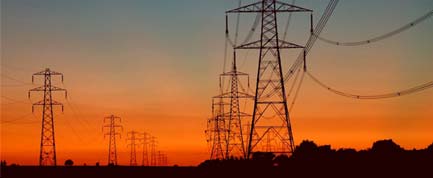Energy Use Dips Due to Recession and Tech Advances

In perhaps some good news for the environment, Americans are using less energy overall and making more use of renewable energy resources, scientists report today.
The United States used significantly less coal and petroleum in 2009 than in 2008, and significantly more wind power, according to energy flow charts released by Lawrence Livermore National Laboratory (LLNL), a government national security laboratory in Livermore, Calif. There also was a decline in natural gas use and increases in use of alternative energy sources, including solar, hydrothermal and geothermal power, the researchers say.
However, the consumption dip doesn't necessarily reflect a sea change in the way Americans think about and use energy, or a shift to more "green" behavior. Rather, the decrease is due, in part, to the current economic downturn as well as advances in technology.
"Energy use tends to follow the level of economic activity, and that level declined last year," said A.J. Simon, an energy systems analyst for LLNL. "At the same time, higher efficiency appliances and vehicles reduced energy use even further."
"As a result, people and businesses are using less energy in general," Simon added.
Energy dip
The estimated U.S. energy use in 2009 equaled 94.6 quadrillion BTUs ("quads"), down from 99.2 quadrillion BTUs in 2008. A BTU or British Thermal Unit is a unit of measurement for energy, and is equivalent to about 1.055 kilojoules, or about the amount of energy needed to raise the temperature of 1 pound of water by 1 degree Fahrenheit.
Sign up for the Live Science daily newsletter now
Get the world’s most fascinating discoveries delivered straight to your inbox.
For comparison, 1 kilowatt-hour (kWh) equals about 3,400 BTUs, with a typical American household consuming some 11,000 kWh per year, according to the U.S. Department of Energy.
Energy use in the residential, commercial, industrial and transportation arenas all declined by 0.22, 0.09, 2.16 and 0.88 quads, respectively.
Wind power increased dramatically in 2009 to 0.70 quads of primary energy compared with 0.51 in 2008. Most of that energy is tied directly to electricity generation and thus helps decrease the use of coal for electricity production.
"The increase in renewables is a really good story, especially in the wind arena," Simon said. "It's a result of very good incentives and technological advancements. In 2009, the technology got better and the incentives remained relatively stable. The investments put in place for wind in previous years came online in 2009. Even better, there are more projects in the pipeline for 2010 and beyond."
Less carbon emissions?
The significant decrease in coal used to produce electricity can be attributed to three factors: overall lower electricity demand, a fuel shift to natural gas and an offset created by more wind power production, according to Simon.
Nuclear energy use remained relatively flat in 2009. No new plants were added nor were any existing plants taken offline in this interval, and the existing fleet operated slightly less than in 2008.
While data on the country's carbon emissions from last year have yet to be released, Simon suspects they will tell a similar story. A 2009 study by the International Energy Agency found that the world's carbon emissions fell sharply that year.
"The reduction in the use of natural gas, coal and petroleum is commensurate with a reduction in carbon emissions," Simon said. "Simply said, people are doing less stuff. Therefore, they're burning less fuel."










